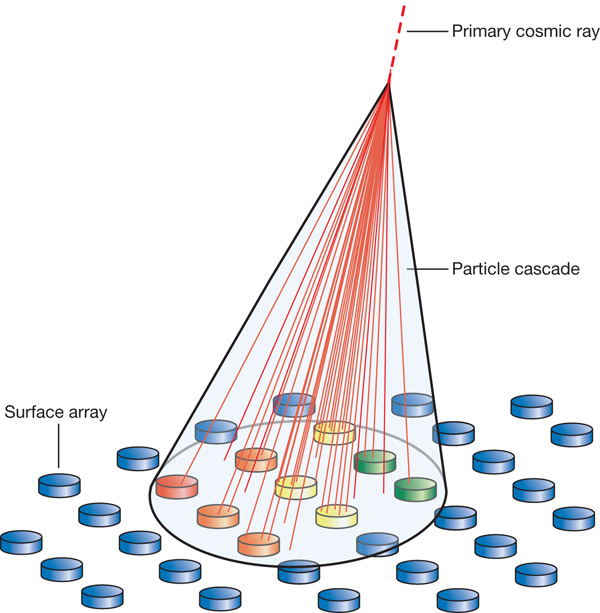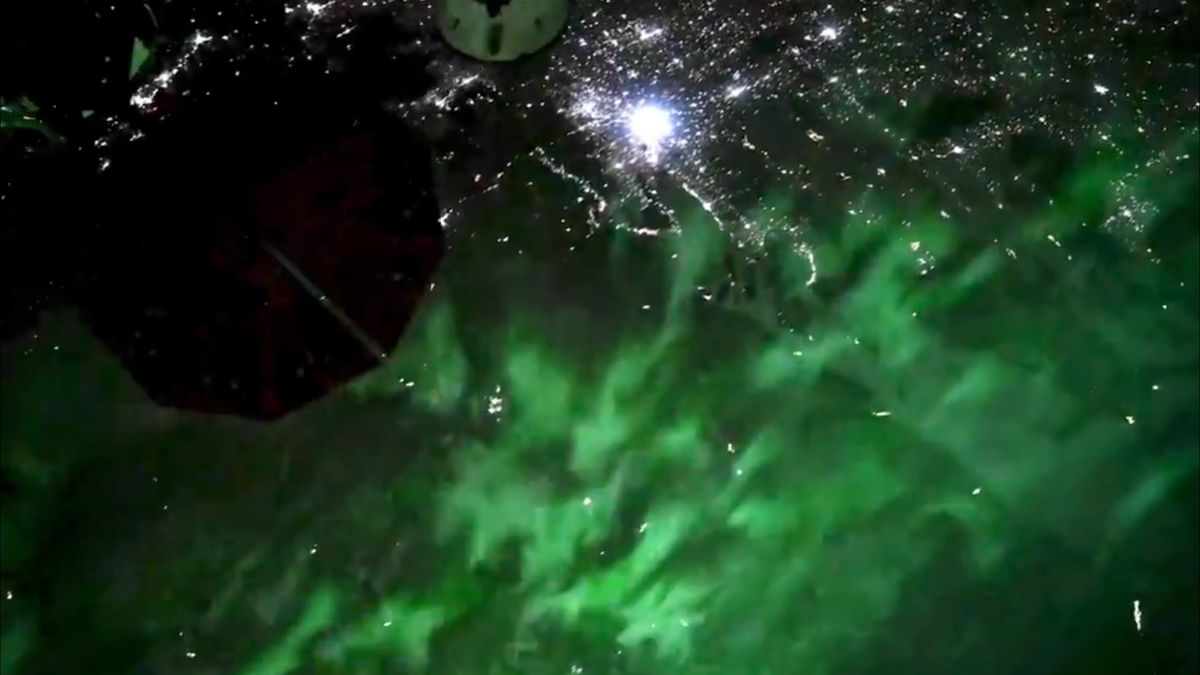By combining the data we collect from all these messengers, we have pushed our knowledge boundaries a lot further, and today understand a whole lot more about high-energy phenomena in the cosmos. And a number of these phenomena –I would argue the most interesting ones, which give us information about the dynamics of the systems that emit those messengers– are transient: they lit up and vanish within months, days, or even just minutes.
Fast-changing transients are both an opportunity and a challenge. That is because many of the instruments we use to detect their signal are only sensitive to narrow fields of view, so they require “alerts” that other wide-field instruments may issue about the turning on of some bright source somewhere in the sky: then they quickly change their aim to frame the area of the sky indicated by the alert.
For ground-based gamma-ray telescopes such as the planned SWGO array (Southern Wide-Field Gamma-Ray Observatory), it would appear that no such alerts are needed. These instruments are in fact sensitive to any source set above some minimal elevation over the horizon; further, in the case of SWGO and a few similar experiments, the imaging technology is based on particle counting instead of optical detection of light, hence observations can be carried out at any time, even during the day.
Extended Air Showers
SWGO will measure high-energy gamma rays by detecting the shower of secondary particles that are produced when the gamma ray interacts with atoms in the atmosphere, producing an electron-positron pair. The two produced particles soon do the same, emitting further gammas. There is thus a multiplication process that results in thousands of secondary particles propagating roughly along the initial direction of the gamma ray. The multiplication ceases when secondary particles do not have any longer enough energy to sustain it.

[Above: an extensive air shower and its detection principle by a ground array (source: Julio Rodriguez Martino)]
Memory of the primary gamma ray energy is carried by the number of particles reaching this final stage; but their propagation in air involves their progressive absorption. That is why ground-based array are constructed at as high altitude as possible, to detect secondary particles before they get absorbed away.
For that exact reason SWGO will be built at an altitude of 4750 meters above ground, at a site in northern Chile called “Pampa la Bola” in the Parque Astronomico near San Pedro de Atacama. The site hosts several other experiments – not far away, e.g., lays the ALMA microwave array, a powerful set of movable radiotelescopes that has produced a number of groundbreaking discoveries in the recent past. At close to 5000 meters of altitude, neither atmospheric showers nor microwave signals get fully absorbed by the atmosphere, and this is an important enabling factor (for microwaves, the dryness of the air on the site is an even more important factor).
How does SWGO plan to measure the flux of electrons, positrons, and photons that are produced when very high-energy gamma rays hit our atmosphere? The planned technology involves the use of large water-filled tanks, of 3m height and 5m diameter. When charged particles moving at relativistic speeds traverse water, they produce visible light by the so-called Cherenkov process. Photomultiplier tubes watching the volumes of water can determine the flux of secondaries from the intensity of the produced light.
Array + Drones = Pointing Instrument
An idea I have been toying with recently, in collaboration with my colleague Michele Doro at the University of Padova, is to enhance the detection of particles on the ground that SWGO will perform by coupling it with some pointing capability, provided by drones flying particle detectors at high altitude over the array. This idea might sound crazy, but it could actually work out to be a true improvement in the science output of the experiemnt, especially on specific astrophysics measurements involving transient sources.
The reason why the above crazy idea may actually be useful is that one of the biggest uncertainties in the ground-based measurement of the energy of extended atmospheric showers from energetic cosmic rays comes from the unknown altitude above sea level where the incident primary cosmic particle first hits an atom of air (usually oxygen or nitrogen). This initial collision typically takes place in the upper atmosphere, and the altitude at which it happens may vary wildly, from ten to a hundred kilometers.
If the first interaction happens high up, you get to see fewer secondary particles on the ground, which will typically bring you to underestimate the energy of the primary particle. If, on the other hand, the first interaction happens deep inside the atmosphere, because the gamma ray has effectively slalomed around many atoms before initiating an atmospheric shower, then you are likely going to overestimate the energy of the primary gamma ray, as you observe a larger number of secondaries.
So imagine you have a flux of ultra-energetic gamma rays impinging on our atmosphere from a point source in the sky which has just lit up. Measuring as a function of time the flux of these gamma rays would be very important, but measuring their individual energy -and thus their differential energy distribution- would be even more crucial to learn more about the dynamics of the phenomena taking place at the source.
SWGO could detect some of those gamma rays in real time by itself, so no communication with other instruments is crucial here; but it does not harm either. In all cases, within minutes the information of where is the source of the gamma ray flux is known. If a few drones were in flight over the instrument, at high altitude, they could be quickly positioned on the line of sight of the source, as seen from SWGO.
Scintillator panels or other suitable detectors carried aboard the drones would then start counting secondary particles at a height of 15 or 20 kilometers, recording invaluable data that could be correlated to the data taken on the ground by the SWGO Cherenkov tanks. The combination of those datasets, once coupled through a proper time stamp (considering the time needed to travel at close to light speed from the drone position to the ground-based array), would allow the energy of each gamma shower to be measured with much higher position than what SWGO could do by itself.
A Pilot Project in Kiruna?
But is this feasible? Yes, it is feasible. Drones today can fly for extended periods of time – I mean a week in a row, or even longer – and carry payloads of 300 kilograms of instrumentation. That is sufficient to instrument a few square meters of detector panels. A few square meters is a tiny fraction of the area on the ground that SWGO plans to instrument with its water tanks: we are talking of several thousand tanks, hence 50,000 or 100,000 square meters! Still, the atmospheric extinction of the secondary particles plays an important role in reducing the gap between what you can measure at 15-20 km of altitude with a few drones and what you see at 5km altitude with a full-fledged array. But most importantly, the energy uncertainty and the position uncertainty of the showers would be reduced by the cooperation of drones and ground array.
So if this is a great idea, why am I writing about it? Don’t I fear to be scooped by other researchers who can pick it up and make it their own new invention? Nope. I am for collaborative science, and I mostly care about the advancement in our understanding of the world and of the universe. If this technology gets deployed I will be happy regardless of whether it will make Michele and myself famous or not (and I think Michele shares this view).
[Besides: blog posts ARE a recognized source these days. In fact, by publishing this post here I am in some way claiming ownership of this idea with Michele -at least for what concerns the coupling of drones with the specific hardware that SWGO will deploy. In fact, I am lazy enough to not have done an extensive survey of the literature, to verify what has been studied on this particular setup already. I suspect there is a significant chance that there is a literature on the topic. See, I am so lazy that in some way I do wish to be flamed in the comments thread here, by some colleague who laughs me off and says he or she already figured it all out. It would save me
so much time!]
On the other hand, pulling off such a project is complex – it requires time and funding. So the reason why I am broadcasting the idea here is that I would be happy if somebody read about it and contacted us to collaborate on the project. We are in fact already working on it, and we are happy to collaborate with colleagues who like it and want to join forces.
One of the natural places to develop the project would be the SWGO experiment itself. But for a pilot project, moving to Pampa la Bola (where no detector has yet been put on the ground yet) makes no sense. A pilot project just needs to prove the technology, by deploying a few detectors on the ground and by flying drones high up, along the line of sight of the Crab nebula or some other steady gamma ray emitter, and to show the effect of the improved two-way detection strategy.
So what we plan to do is to exploit our collaboration with S-Range, the space center in Northern Sweden near Kiruna. The director of the center in Kiruna is Rene’ Laufer, a friend with whom we have already discussed some details of how this could be set up. As I plan to spend time in the north next year (I have a guest professor appointment at Lulea Technical University these days), it makes sense to try and build some infrastructure there. A pilot project along the lines I described above seems something worth investing time!








Leave a Comment